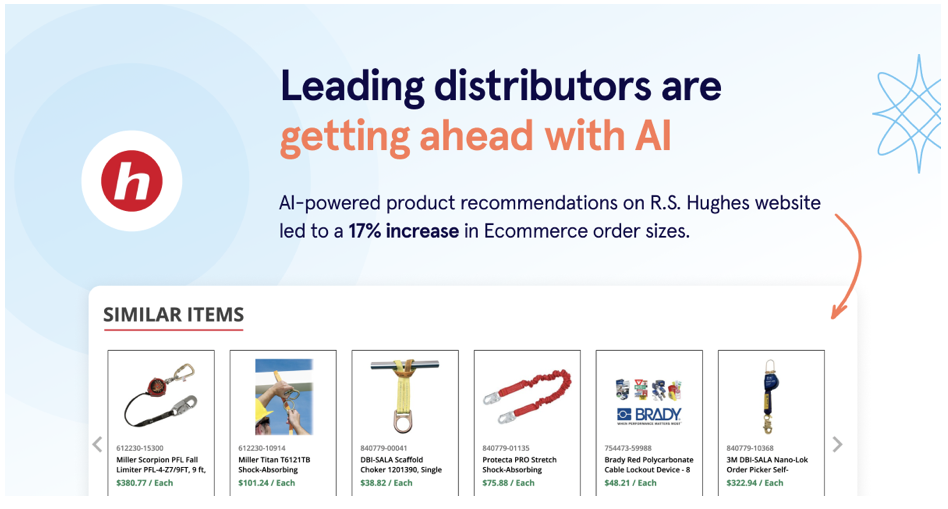Exclusive: Proton – Why Distributors Can Beat Amazon
Distributors have shown they can beat Amazon. So, what’s the real threat?
By Benj Cohen
 Five years ago, automotive parts distributors were really worried about Amazon—and who could blame them? After all, the ecommerce giant had already dominated several other markets thanks to their seemingly unbeatable pricing, and they were offering nearly everything an auto parts distributor could sell at half the cost.
Five years ago, automotive parts distributors were really worried about Amazon—and who could blame them? After all, the ecommerce giant had already dominated several other markets thanks to their seemingly unbeatable pricing, and they were offering nearly everything an auto parts distributor could sell at half the cost.
Fast forward to today, however, and you’ll find that Amazon has not made very much progress in the auto parts market. Why?
Well, it turns out that for distributors’ customers, price isn’t as important as we thought.
This is just one example of the many segments that have been hit by Amazon and other marketplaces like it. To compete with Amazon, you must start by understanding what your customers care about.
What do distributors’ customers care about?
According to Distribution Strategy Group’s annual State of Distributor Customer Experience research, distributors’ customers (they’ve surveyed more than 12,000 of them) do want a competitive price. They also want reliable delivery and product availability.
But they also demand technical support and product expertise, which can be differentiators.
As DSG points out, every customer base is different. But generally, you can boil down what businesses value in their suppliers to three factors (beyond price):
- They want everything they need to be in one place.
- They want the right stuff, right now.
- For more technical selections, they want to talk to a product expert.
Everything in one place
B2B customers already have lots of plates spinning. If they can help it, they don’t want to have relationships with a bunch of different distributors because that just introduces more plates. Instead, they want to be able to consolidate as much of their purchasing as they can. That saves them and their preferred distributors both time and money.
While Amazon’s 3P service (Seller Central) allows distributors to offer this ability to an extent, they still lack many of the critical, niche products that B2B customers are looking for. This provides an opening to specialized distributors.
Right stuff, right now
If an auto shop has a car up on the lift and realizes they need a specific part, they can’t wait for a third-party seller to deliver it a few days or weeks later. And while Amazon needs 12x inventory turnover in a year to make selling a particular product worth it, specialized distributors are fine with 4x to 6x turnover and even as low as 1x to 2x turnover to stock niche products. This gives specialized distributors an edge.
Not only can specialized distributors offer more niche products, in stock, when their customers need it. They can offer onsite services, such as vending or plant storerooms, to ensure frequently used items are at the point of use and replenished before they run out.
Talking to an expert
Amazon Business has thousands of “sales” people … but do they? In reality, their salespeople are customer service reps who may not have deep knowledge of all the products and their applications in specific markets. The local touch matters here, too. Take a niche market, such as mining. There are distinct and critical differences between the hoses someone would use in surface mining vs. underground hard-rock mining. There may be further differences based on what is being mined locally, which only a distributor with a branch that serves that area can know.
B2B customers want to talk to folks who know the minutiae of their industry. In other words, while Amazon Business may have thousands of reps, those reps are more generalists, spread out over millions of SKUs. They can’t have the same level of expertise on hoses that a distributor with even hundreds of reps focused on that category would have. Amazon Business reps can answer questions about your order, like when it can be delivered, etc. but don’t expect any level of insight about the specific products you’re ordering beyond what’s listed in the product description.
The real threat to distributors
Auto parts distributors have shown that Amazon is not quite the threat to distributors we all feared. And while there’s still a lot to learn from how they do business, we think they’re unlikely to be the winners in B2B.
The real threat comes from vertical-specific marketplaces. A marketplace is a site where third parties provide the products or services, but the transactions are processed by the operators, such as Amazon Business.
Vertical-specific marketplaces, those focused on one product category or segment, have the momentum and investment capital to beat distributors, and distributors need to know how to fight back.
How vertical-specific marketplaces are winning
Vertical-specific marketplaces combine Amazon’s endless aisles of products with vertical-specific solutions, such as procurement buying tools that Amazon can’t offer. And perhaps most importantly, these marketplaces have received billions of dollars in investment, so they’re not going away any time soon.
These investors believe distributors aren’t paying enough attention to customer needs and that these marketplaces can offer a more personalized, robust omnichannel experience. Venture capitalist Amelia Miller told us that B2B buyers across verticals are unsatisfied with the customer experience of purchasing. In the data she provided, nearly 40% say they are experiencing order errors weekly or even daily (!), and nearly three-quarters prefer to access product information online – but don’t feel like they can.
Those numbers are astounding and why buyers are flocking to these platforms.
A strong example of a vertical-specific marketplace is Kojo, which bills itself as a “one-stop shop” for building contractors across all trades. That includes mechanical, concrete, roofing, electrical, flooring and drywall. They have $1 billion in gross merchandise value and offer a superb buying experience with integrated procurement tools. They even charge their customers a subscription fee —and because the experience is so good, their customers are happy to pay it.
Kojo is successful for a few reasons:
- They understand their customer’s buying journey. They know that orders can start from a contractor’s project materials list or a field request during construction, so they offer a platform with tools that connect the field team to the contractor’s office so that everyone can place orders and have visibility into orders that have already been placed.
- They make material delivery into a 360-degree experience. When materials are delivered on-site, the field team can quickly log proof of delivery, flag any issues (such as damage) and see backorders, all through Kojo’s mobile app.
- They add value through post-project reporting. When a contractor finishes a job, Kojo generates free reports based on their real-time purchasing data, which helps them stay on track and plan.
And Kojo is far from the only successful vertical-specific marketplace. Machining Cloud offers a streamlined, cloud-based process for finding and buying cutting tools. They’ve partnered with 74 tool manufacturers to offer over 1 million items, and their app makes it easy for customers to find what they need. That includes a tool that helps them parse through usage and geometric information, as well as application knowledge. It includes 3D models and 2D drawings to help their users improve programming accuracy.
And forget one-off purchases. The platform allows users to assemble the right combination of tool components for purchase and saves the product information in a tooling package accessible to others in the company. Like Kojo, they understand their market and are focused on creating a seamless and integrated customer experience.
What can distributors do to fend off this threat?
First, do not sell through marketplaces. A distributor’s value comes from owning the customer relationship, and marketplaces take away those critical value services that help drive margins. When you give up your relationship with the customer, you become nothing more than a warehouse and a truck, and your margin goes down. You might as well wave the white flag.
“If you can’t beat ’em, join ’em” is only good advice if you really can’t beat ’em, but distributors absolutely can. How? By becoming your own marketplace. You can do this by building on top of your commerce experience and infrastructure without creating a separate marketplace brand. This is a three-step process:
- Sell more stuff.
- Invest in your customer experience.
- Offer complementary buying solutions.
1. Sell more stuff.
Marketplaces like Kojo and Machining Cloud have incredibly wide product offerings, so distributors need to continually find and invest in long-tail products. You don’t have to do anything new or fancy — simply add more products, drop-ship some and take enough margin to pay your sales team.
2. Invest in your customer experience.
Remember the Distribution Strategy Group research on what customers want? They also found that customers want a lot of flexibility in how they interact with you. Some want to shop digitally but speak to a sales rep – and then buy online, for example. According to McKinsey, B2B buyers may use as many as 10 channels in their sales journey.
That path typically includes a human, as well. Despite the stereotype that B2B is impersonal, customers want to buy from people they know and like because it’s reassuring — it’s not purely transactional. Genuine personal connections have a power that’s hard to quantify.
Omnichannel means not just having multiple sales channels but connecting them to provide a seamless buying experience. If customers have to “start over” every time they interact with a new employee or on a new platform, they’ll get frustrated in a hurry. Everyone on your team should be able to answer questions about purchases, no matter where they originated. On your ecommerce site, your customers should see recommendations for products they’re due to reorder based on purchases they placed via outside sales reps.
Successful firms understand this. The Home Depot cites its investment in a true omnichannel experience as one of the company’s main growth engines. And one of the distributors we work with, R.S. Hughes, has recently made great strides in delivering a consistent, seamless experience for buyers, no matter how they shop. Every channel accesses the same AI-powered recommendation engine, giving customers a seamless, omnichannel experience.
Using product recommendations sourced from each customer’s purchase history, browsing behavior and data from similar clients, the distributor’s sales reps know who to talk to, when and about what products. When customers shop online, R.S. Hughes’ ecommerce platform guides them to relevant product substitutes, suggested add-ons and “customers also bought” recommendations.

Personalization means tailoring the shopping experience to the customer. People are much more likely to focus on information that is directly relevant to them. The phenomenon known as the cocktail party effect demonstrates this. The next time you’re at a crowded party, take a moment to let the different conversations wash over you. Before long, you’ll probably notice that your brain has automatically filtered out the conversations that don’t matter to you so you can hear the one that does.
At this point, customers expect sellers to do the filtering for them. When they do, they’re more likely to stick around longer and buy more product. Here’s one of those lessons distributors can still learn from Amazon: About 35% of their revenue is driven by AI-powered personalization, which processes customer data to automatically generate useful product recommendations. It’s their most effective and copied strategy, and it works everywhere, from retail to streaming.
Today, 80% of what gets watched on Netflix stems from a hyper-personalized AI recommendation! Personalization was a “big bet” for Netflix, but it paid off. Its personalization technology differentiated the company from its competition, but it also gave users what they wanted—personalized movie recommendations they would love.
When your recommendations are relevant, customers will trust them, and when customers trust them, they’re much more likely to buy. Distributors like R.S. Hughes tailor each customer’s experience. Their customers receive recommendations for products they’re due to reorder, which prevents churn. They also get recommendations for products they should be buying based on their purchasing behavior and learn about new products in their catalog. Between relevant product categories and complete-the-cart recommendations, their customers happily get everything they need, resulting in increased revenue.
3. Offer complementary buying solutions
Value-added services tend to be “physical” in nature — repairs, servicing, installation, consulting, etc. But if distributors want to beat marketplaces at their own game, they need to invest in digital services, too. This means knowing your customers’ jobs, understanding the problems they face, and offering technological solutions relevant to their entire journey. Kojo understands that a contractor wants to shop around before placing an order, so they facilitate price optimization through their procurement software.
Stay in the Game with a Vertical Marketplace
With venture capitalists betting on vertical-specific marketplaces to the tune of billions of dollars, it’s safe to say that they’re not going away. Distributors need to become their own marketplaces. The good news is that they already have what it takes to do so: knowledgeable sales reps, rich product catalogs, value-added services, and fast procurement.
To put that all together, though, distributors have to prioritize their customers’ experience. These platforms should offer customers the flexibility to easily find products, independently research information, see pricing comparisons and use convenient payment options. CS
Benjamin Cohen is founder and CEO or Proton/ai, the only AI-powered growth platform built for distributors. Get full visibility into customers and their needs so you never miss a sales opportunity again. Visit www/proton.ai to learn more.















